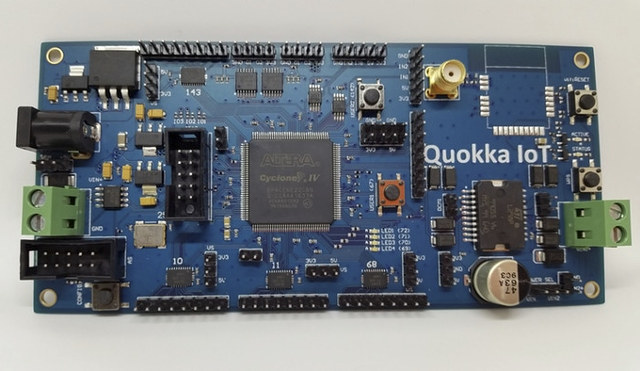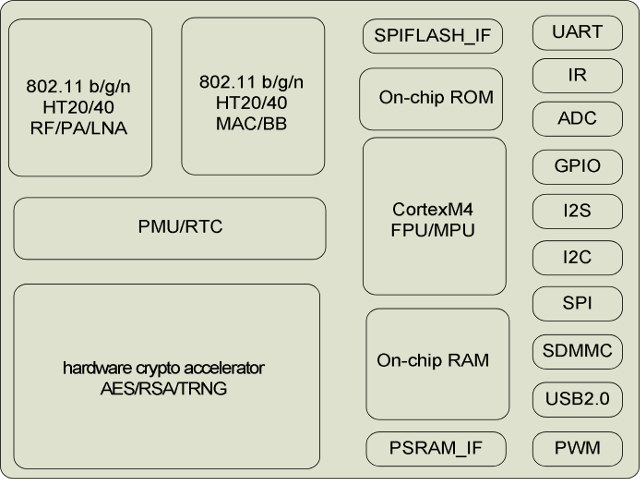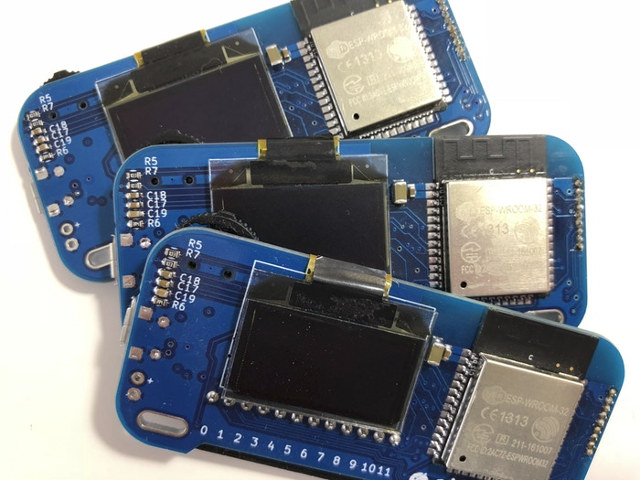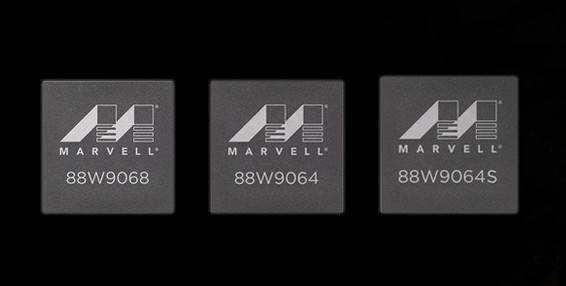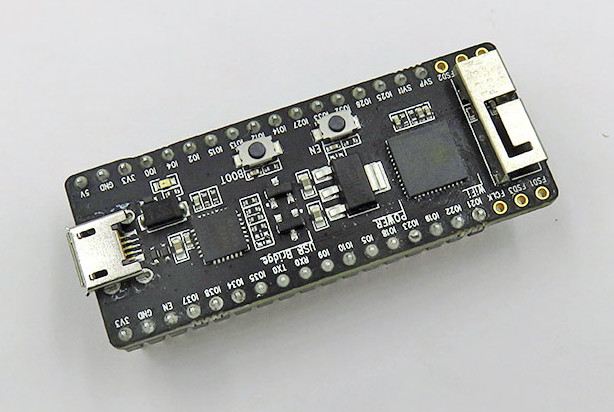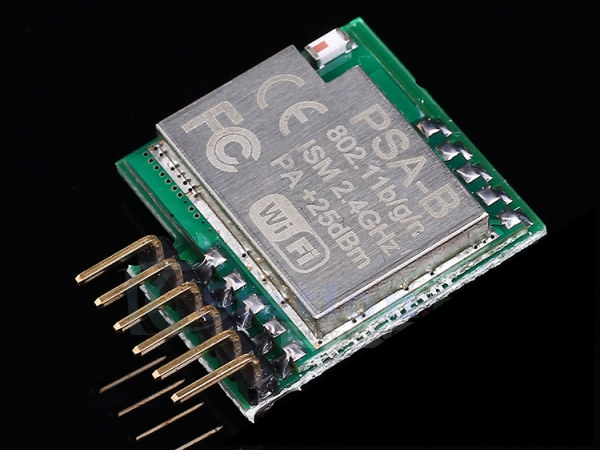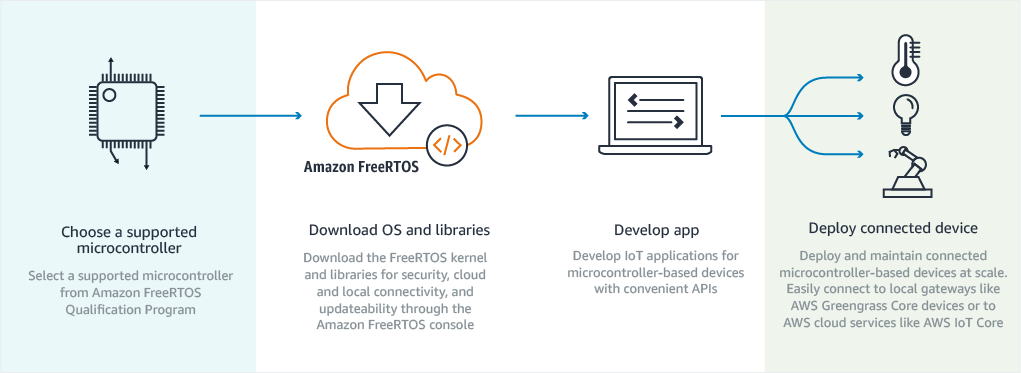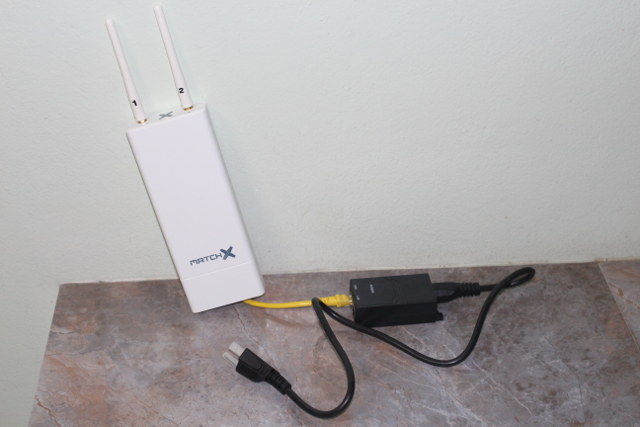Quokka FPGA IoT Controller is a board based on Altera Cyclone IV FPGA with a WiPy module for connectivity, and various I/Os that allows you to make robotics projects for example. While you could program the FPGA using VHDL, the developer – Evgeny Muryshkin – also designed Quokka Development Toolkit (QDT), a cloud-based SaaS, allowing to program FPGA with a high-level programming language, currently C#, so that software people can more easily become involved in FPGA development. Quokka IoT (preliminary) hardware specifications: FPGA – Intel Altera Cyclone IV, 6K logic elements, EP4CE6E22C8 Clock – 50MHz Connectivity – WiFi via WiPy module Expansion 40x GPIO (3 banks by 8 pins, with direction and voltage (3.3V or 5V) configuration, 16 raw IO pins 3.3V) 2x Dual Channel 10 bit ADC (3.3V) 2x Dual Channel 10 bit DAC (3.3V) H-Bridge for DC motors with support for external power Power Supply – 5-24V DC input […]
$1 RDA5981 WiFi IoT Arm Cortex-M4 SoC is Designed for Smart Home Devices, Smart Speakers
RDA Microelectronics processors are found in a few cheap smart and not-so-smart phones, as well as the even cheaper Orange Pi i96 board. But the company does not only design cellular chips, but their portfolio also includes solutions for the Internet of Things and TV & radio tuners. RDA5981 is a WiFi IoT chip specifically designed for smart home & audio application, such as smart speakers, and it’s found in devices running Baidu DuerOS, the Chinese equivalent of Amazon Alexa or Google Assistant. The company explains it can be widely used in televisions, set-top boxes, smart appliances, wireless monitors, and other products. RDA5981 A/B/C processor specifications: CPU – Arm Cortex-M4 @ up to 160 MHz with integrated MPU and mbed uvisor System Memory – Up to 448 KB SRAM for network stack and application, external PSRAM interface Storage – Up to 32Mbit SPI flash Connectivity WiFi 2.4 Ghz 802.11b/g/n WiFi […]
Obniz ESP32 Board is Programmable in JavaScript from the Cloud (Crowdfunding)
ESP32 WiFi / Bluetooth boards are now commonly supported by the Arduino IDE, and alternative firmwares are also available to program them using JavaScript (e.g. Espruino), or MicroPython. But if are familiar with JavaScript / Node.js, and don’t want to flash your own firmware, Obniz board could be an option. The board exposes 12 I/Os programmable from the company’s Cloud service, and features a OLED display used to show your program information, or a QR code to easily program the board from your smartphone’s browse once a WiFi connection has been setup. Obniz hardware specifications: Wireless Module – ESP-WROOM-ESP32 based on ESP32 dual core 802.11 b/n/g WiFi + Bluetooth LE WiSoC Display – 128×64 OLED display I/Os 12x I/O pins each configurable as GPIO, ADC, UART, SPI or I2C (no specialized pin, each can handle those functions) Up to 1A drive per I/O to control motors 3.3 or 5V selectable […]
Marvell 802.11ax WiFi Chips are Designed for Enterprise Gateways, Mainstream Routers, and Set-Top Boxes
High-Efficiency Wireless (HEW), better known as 802.11ax, is a new WiFi standard that is supposed to deliver up to 10 Gbps bandwidth over 2.4 and 5.0 GHz frequencies, and improve the average throughput per user by a factor of at least 4 times in dense environments. Several draft of the specifications have been voted on, but the latest 802.11ax timeline seems to indicate the final 802.11ax specifications will only be approved sometimes in 2019. This has not prevented companies to announce or unveil 802.11ax SoC or solutions based on the draft specifications, as we’ve seen in the past with NXP Layerscape LA1575 programmable WiSoC, Qualcomm gateway reference design, and Broadcom Max WiFi chips. Marvell has now joined the fray with their 802.11ax wireless portfolio. All Marvell 802.1ax WiSoCs support all using uplink & download OFDMA / MU-MIMO, 1024 QAM, off-channel spectrum scanning, dedicated in-service monitoring, and precision location. Three SKUs […]
ESP32-PICO-KIT v4 Board Based on ESP32-PICO-D4 SiP Now Available for $10
A little while ago, I received a bunch of ESP32 PICO Core development boards which were based on Espressif Systems ESP32-PICO-D4 system-in-package with ESP32, 4MB SPI Flash, and other components. The advantage of such chip is that is requires less external component, and allows for smaller designs. For example, the boards I received would leave two row of pin on each side of the board, while most other ESP32 boards will only expose one row on each side. I used the board to play with Micropython ESP32 port, and later-on when I launched a giveaway of 8 of the boards, I found out the name had changed to ESP32-PICO Kit, with the documentation listing v3 with all pins connected to male headers, and v4 with 6-pin not connected to a male header as shown in the photo below. Both versions of the board also have a different pin layout. But […]
This Tiny ESP8266 Board is Designed for DIY WiFi Switches
Various breadboard-friendly boards based on ESP8266 or other chips are available on the market, but some readers are not quite satisfied with the offerings, and need more available pins on the breadboard so they ended up hacking the board matching their needs by either bending header pins, or soldering modules to stripboards. As I browsed new arrivals on ICstation website, I found a tiny board with ESP8266 module that exposes I/Os via what looks like 2.54 mm pitch header that should fit right into a breadboard. But after further checking only three I/Os are exposed, and the board is actually specifically designed for wireless switches, and comes with firmware that works with eWelink app used in Sonoff devices. So the module could be useful for people wanting to control devices without doing programming at all, and limited to no soldering. Just connect the module, and control it without smartphone. Board […]
Amazon FreeRTOS Released for NXP, Texas Instruments, STMicro, and (soon) Microchip Microcontrollers
FreeRTOS is an open source real-time operating system for microcontrollers released under an MIT license, and when it comes to adoption in embedded systems it’s right there near the top with embedded Linux according to Aspencore 2017 embedded markets study. For example, some Espressif SDKs for ESP8266 or ESP32 are based on FreeRTOS, and so is Mediatek LinkIt Development Platform for RTOS. The recently announced Amazon FreeRTOS (a:FreeRTOS) leverages the open source operating systems, and extends it with with libraries that enable local and AWS cloud connectivity, security, and soon over-the-air updates. a:FreeRTOS is free of charge, open source, and available today. In order to get started, you’ll have a choice of 4 hardware platforms: STMicro STM32L4 Discovery Kit IoT Node (B-L475E-IOT01A) powered by STM32L475 ARM Cortex-M4 MCU with 802.11 b/g/n WiFi, Bluetooth 4.1 LE, RF (868 / 915 MHz), and NFC connectivity, plenty of sensors NXP LPC54018 IoT module (OM40007) […]
MatchBox LoRaWan Gateway Review – Part 1: Unboxing and Teardown
Last spring, I wrote about MatchX.io MatchBox LoRaWAN gateway with GPS, WiFi, and Ethernet connectivity. The gateway is equipped based on a Mediatek WiFi module running Linux (OpenWrt/LEDE), Semtech chips for the LoRa part, and support up to 65,535 nodes, such as the as well as MatchStick, MatchModule, and MatchCore sensors provided by the company. I’ve just received MatchBox gateway for review, but I’m still waiting for 920-925MHz LoRa nodes as they are going through the FCC certification process, and I also have to wait for clarifications regarding local regulations. So in the meantime, I’ll check out the gateway hardware. MatchBox LoRaWAN Gateway Unboxing The gateway is shipped with a power supply, power cord, two antennas, an installation guide,… as well as three screws and pegs to wall mount the gateway and power supply, and in case you want to install the gateway on a pole, as shown below, for […]


